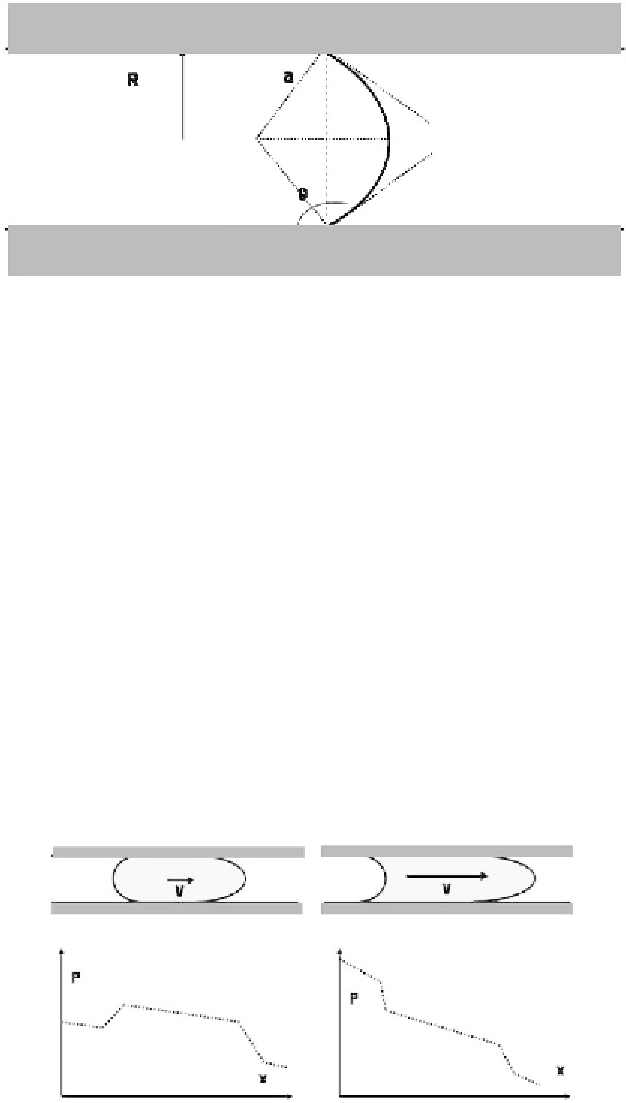Biomedical Engineering Reference
In-Depth Information
Figure 4.44
Schematic view of the meniscus in a cylindrical capillary tube.
D =
2
γ
P
cos
θ
(4.64)
r
r
R
Remark that in our convention the pressure drop is always taken following
the fluid flow. Consider the two configurations of Figure 4.45; if
q
a
is larger than
p
/2, there is a positive pressure drop associated with the advancing interface. If
q
r
is smaller than
p
/2, the receding front contributes positively to the pressure drop
[Figure 4.45(b)], and negatively in the opposite case [Figure 4.45(a)].
The capillary pressure drop is due to the difference of the capillary forces be-
tween advancing and receding fronts because of the two different contact angles
(advancing and receding)
q
a
and
q
r
2
γ
D
P
=
( cos
-
θ
+
cos
θ
)
(4.65)
cap
a
r
R
Equation (4.65) shows that too many plugs in the capillary may rapidly block
the flow. For
N
plugs in the flow the capillary pressure drop may be larger than the
driving pressure
Figure 4.45
Two possible configurations for a plug moving inside a capillary tube: (a) at a low
velocity, the receding angle is larger than
p
/2 and the contribution to the pressure drop is negative;
(b) at a high velocity,
q
r
is smaller than
p
/2 and the contribution to the pressure drop is positive. The
slope of the pressure drop inside the different liquid is due to the friction pressure drop.





